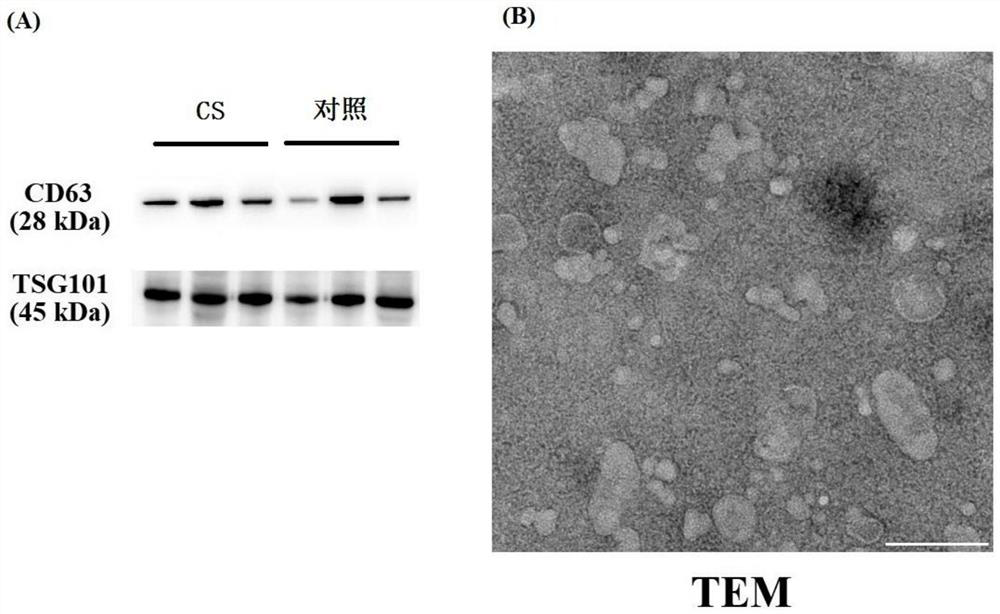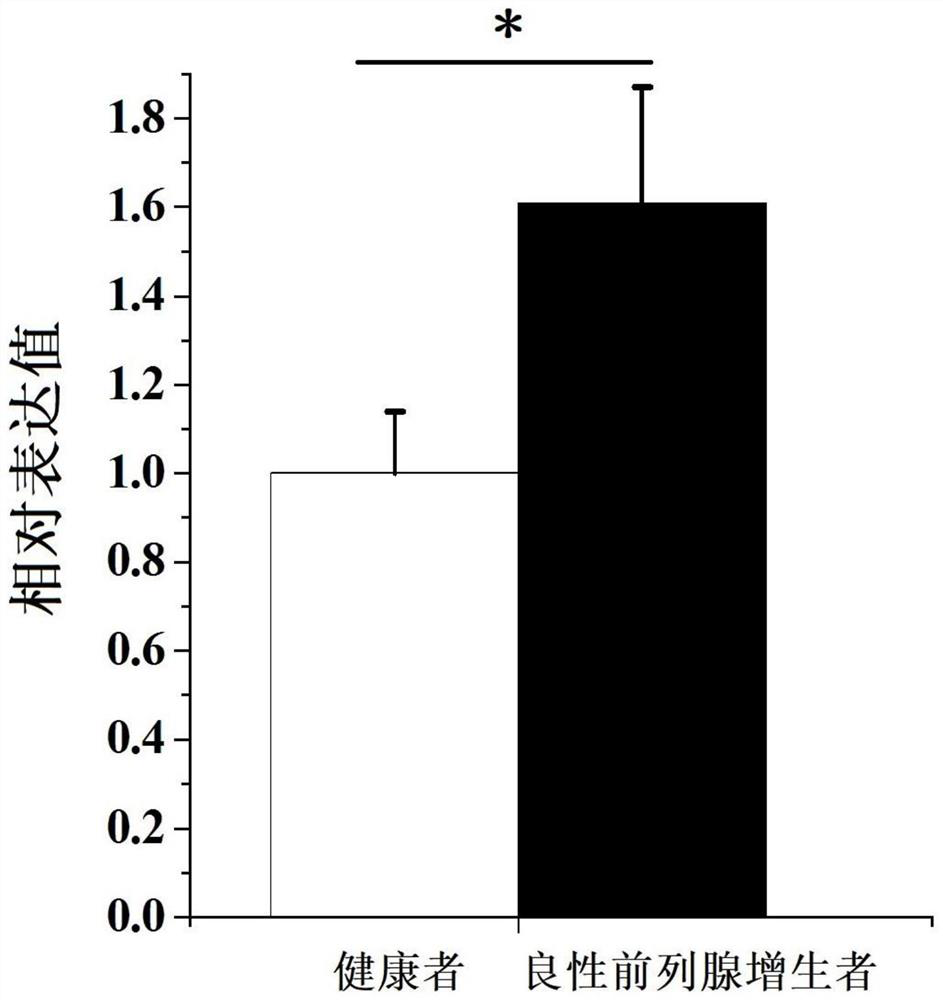Application of exosomal circular RNA 0109315 as a target in the prevention and treatment of benign prostatic hyperplasia
A technology for benign prostatic hyperplasia and exosomes, which is applied in the detection/testing of microorganisms, medical preparations containing active ingredients, and urinary system diseases, etc. question
- Summary
- Abstract
- Description
- Claims
- Application Information
AI Technical Summary
Problems solved by technology
Method used
Image
Examples
Embodiment 1
[0025] Cigarette extract stimulates WPMY-1 cell proliferation.
[0026] (1) Human normal prostate stromal immortalized WPMY-1 cells were provided by the Chinese Academy of Sciences Stem Cell Bank.
[0027] (2) WPMY-1 cells were cultured with DMEM medium (containing 10 fetal bovine serum, 100 U / mL penicillin and 100 μg / mL streptomycin).
[0028](3) Hongjinlong brand cigarettes (with nicotine, tar and carbon monoxide contents of 0.6, 8 and 11 mg / stick, respectively) were purchased from Wuhan Tobacco (Group) Co., Ltd.
[0029] (4) Fresh 10% cigarette smoke extract (Cigarette smoke, CS) was prepared by injecting smoke from a burning cigarette into 10 ml of culture medium and filtering it through a 0.22 μm filter membrane. 5% CS was obtained by dilution in medium.
[0030] (5) WPMY-1 cells were incubated with 5% CS for 48 hours.
[0031] (6) Collect 50 mL of cell supernatant, and extract exosomes with an exosome extraction kit (Guangzhou Jisai Biotechnology Co., Ltd.).
Embodiment 2
[0033] Whole transcriptome sequencing of WPMY-1 cell supernatant exosomes.
[0034] Collect WPMY-1 cells (control group) and exosomes from the cell supernatant after incubation with 5% CS in Example 1 for 48 hours, and each group has 3 biological repetitions.
[0035] The physiological conditions of WPMY-1 exosomes from human normal prostate stromal immortalized cells are as follows: figure 1 shown.
[0036] Extract the total RNA of exosomes, measure the RNA concentration with NanoDrop ND-1000 instrument, and the OD260 / OD280 value of 1.8-2.1 is qualified. High-throughput sequencing was provided by Shanghai Yunxu Biotechnology Co., Ltd. The sequencing library was constructed after removing ribosomal RNA from the sample. Quality control and quantification of the library were carried out by BioAnalyzer 2100system, and 150bp double-end sequencing was performed by illumina Hiseq4000 sequencer. STAR software (v2.5.1b) was used to align high-quality reads to the reference genome / ...
Embodiment 3
[0039] Application of hsa_circ_0109315 as a marker of benign prostatic hyperplasia:
[0040] Exosomal hsa_circ_0109315 levels in peripheral blood of healthy volunteers and patients with benign prostatic hyperplasia:
[0041] (1) Clinical specimens were collected from August 2020 to March 2021. Seven samples of peripheral blood were collected from BPH patients and healthy volunteers from Pu Ai Hospital Affiliated to Tongji Medical College of Huazhong University of Science and Technology. The research involved in this application was approved by the Academic Ethics Review Committee of Jianghan University and the Ethics Committee of Puai Hospital Affiliated to Tongji Medical College, Huazhong University of Science and Technology.
[0042] (2) Extract exosomes with an exosome extraction kit (Guangzhou Jisai Biotechnology Co., Ltd.).
[0043] (3) hsa_circ_0109315 is 4296bp in length, and its corresponding parental gene is located at chr19:23541232-23545527;
[0044] (4) The seque...
PUM
| Property | Measurement | Unit |
|---|---|---|
| diameter | aaaaa | aaaaa |
Abstract
Description
Claims
Application Information
 Login to View More
Login to View More - R&D
- Intellectual Property
- Life Sciences
- Materials
- Tech Scout
- Unparalleled Data Quality
- Higher Quality Content
- 60% Fewer Hallucinations
Browse by: Latest US Patents, China's latest patents, Technical Efficacy Thesaurus, Application Domain, Technology Topic, Popular Technical Reports.
© 2025 PatSnap. All rights reserved.Legal|Privacy policy|Modern Slavery Act Transparency Statement|Sitemap|About US| Contact US: help@patsnap.com



